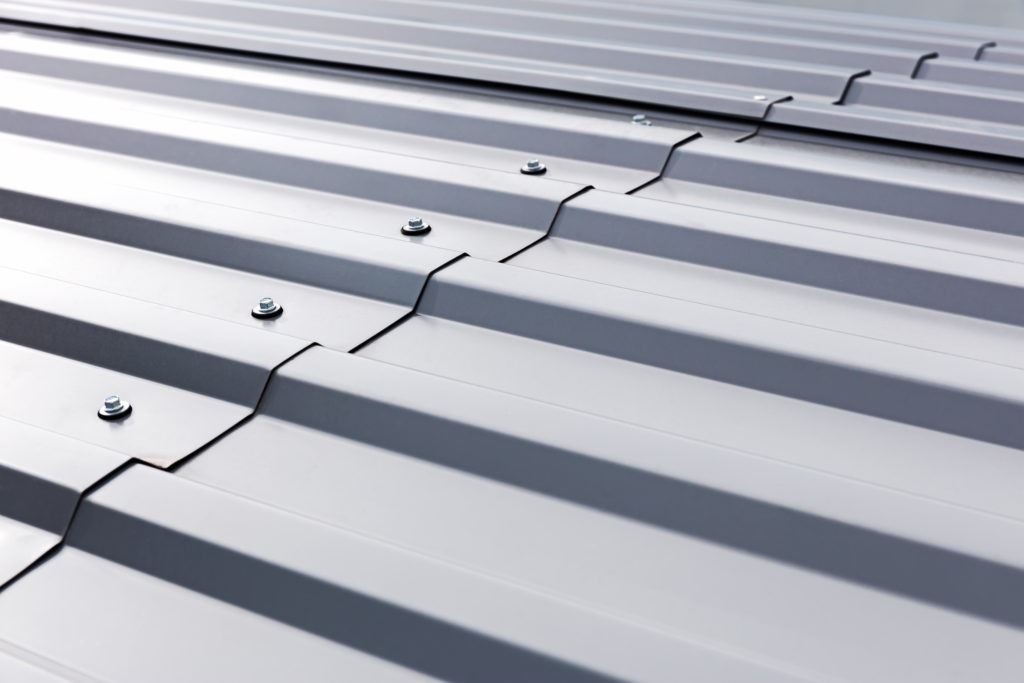J & J Roofing Services Wants You to Have the Best, Longest-Lasting Roof
Let’s just say it: Exposed fastener roof systems are a bad idea. If you’re ready for a new roof but want something different than a standard, asphalt-shingle roof, you may be considering metal. Most homeowners invest in a metal roof expecting to enjoy all of its benefits — energy efficiency, low-to-no maintenance, increased home value, and long-life expectancy. You’ll need to decide which metal roof system is right for your situation: standing seam vs. an exposed fastener panel. The roofing experts at J & J Roofing Services in Vandergrift, PA, want you to have the information you need to make the right purchasing decision. Our owner has more than two decades of experience in the roofing industry, and we strive toward total customer satisfaction on every job.
What is a Standing Seamed Roof Vs. an Exposed Fastener Roof?
A standing seam metal roof system is a series of panels locked together at the seams or seamed mechanically. The ribs (standing seams) are usually between 12 and 24 inches apart, depending on the length of the panel and aesthetics of the structure. A standing seam roof requires no maintenance once installed except at the penetrations, such as vent pipes or gas pipes. Cleaning is the only other general maintenance that’s needed, and that’s a personal choice for each customer. As long as it’s installed properly, a standing seam metal roof shouldn’t have problems and need very little maintenance. This is the type of metal roof we here at J & J Roofing Services recommend.
There are many reasons that we do not recommend an exposed fastener roof for residential or commercial buildings. An exposed fastener metal roof is a roofing system where the panels fasten directly to the structure through the face of the metal and directly into the roof deck or framing below. The panel edges lap one another, and the fastener goes through both layers of metal. An exposed fastener roof is also called a screw-down panel. Because the screws (fasteners) go through the panel, there’s no room for expansion and contraction. Due to this, exposed fastener metal roofs are better suited over a carport, garage, back screened-in porch, barn, or anywhere that’s not a heated living or workspace.
Exposed Fasterner Roofs Have Shorter Lifespans
Metal roofs are generally looked upon favorably for their long lifespans. A standing seam metal roof averages a 50-year lifespan. That is not the case for all metal roofs. An exposed fastener system roof only averages a 20-year lifespan, depending on the maintenance and location of the roof.
Since an exposed fastener metal roof cannot expand and contract freely, pressure can wear the washers and screws, creating larger holes. This can lead to rain leaks and wind drafts. You should expect to have early roof inspections and maintenance. Unfortunately, if you wait to see the damage, it could be too late. If you wait too long, you could have interior roof leaks and bigger problems, like a strong storm tearing off the metal roof.
Most exposed fastener systems are not engineered to stringent industry standards, meaning that the roof’s performance isn’t verifiable. Panel testing, if any, varies, based on the manufacturer and system. The key to having a long-lasting roof is to schedule regular roof maintenance and inspections performed by roofing contractors. By identifying issues early and performing roof repairs, you can extend your roof’s lifespan with these small home improvements.
Be Prepared for Higher Maintenance Needs and Costs
When compared to a standing seam metal roof, exposed fastener roofs require more frequent maintenance, especially regarding fastener upkeep. This maintenance will include the regular metal roof maintenance of:
- Removing leaves, sticks, and other debris.
- Cleaning out any gutters and drains.
- Cleaning dirt, mildew, stains, and other elements off the surface.
- Checking for scratches, scuffs, chalking, fading, and flaking.
- Looking for spots where dissimilar metals may be in contact.
- Checking the state of all fasteners and replacing those in poor condition, such as those that are backing out, loosening, rusting, or showing other signs of degradation.
- Making sure all of the foam closures, which are common with exposed fastener systems, are still in good condition and not breaking down.
There is No Peace of Mind with Exposed Fastener Metal Roofs
While certain types of metal roofs can give you peace of mind, exposed fastener metal roofs can have the opposite effect. While they start at a more affordable price, the costs and maintenance needs quickly escalate. Many roofing contractors, including our team here at J & J Roofing Services, do not recommend them for homes or businesses. There are many reasons including:
No Waterproofing
Installing an exposed fastener roof requires the creation of many holes only covered by the fastener. Over time, the metal will expand and contract, causing the holes to change in size. Ultimately, it can lead to water damage.
Fastener Issues
Rain, wind, and sun exposure can cause several problems with exposed fasteners, including wear-and-tear.
High-Maintenance
Debris, dirt, sticks, leaves, mildew, and flaking must be regularly checked for and cleaned from an exposed fastener roof.
Aesthetics
Some consider exposed fastener roofing to have a rural look, instead of the more popular modern look.
Increasing Costs
While the initial cost of supplies and labor is usually cheaper than a standing seam metal roof, maintenance costs and the earlier replacement will lead to higher costs over time.
For more information on types of roofs, give J & J Roofing Services a call at (724) 568-4164, or email us at [email protected]. We are happy to discuss more about metal roofing and why exposed fastener roofs are a bad idea.


